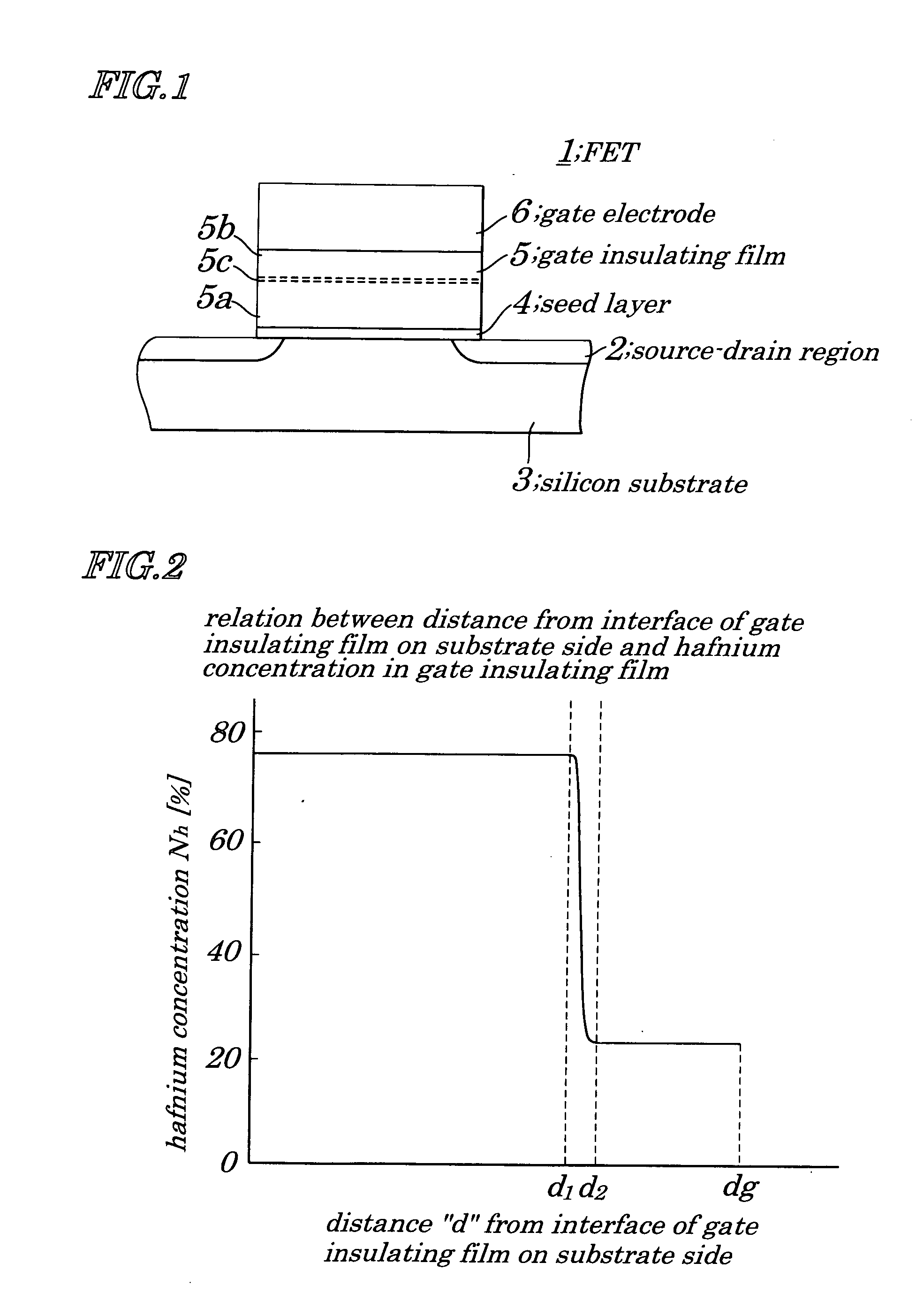Semiconductor device and method for manufacturing same
a semiconductor and film technology, applied in semiconductor devices, capacitors, electrical equipment, etc., can solve the problems of difficult manufacturing of cmos (complementary mos), metals cannot be practically employed, and the gate insulating film is easily short-circuited, so as to prevent the occurrence of a grain boundary passing through the insulating film, the effect of suppressing the crystallization of hafnium oxide and preventing the lowering of electrostatic capacitan
- Summary
- Abstract
- Description
- Claims
- Application Information
AI Technical Summary
Benefits of technology
Problems solved by technology
Method used
Image
Examples
first embodiment
[0062]FIG. 1 is a cross-sectional view for schematically illustrating featured configurations of an FET (Field Effect Transistor) according to a first embodiment of the present invention. FIG. 2 is a characteristic diagram briefly showing a relation between a distance from an interface of a gate insulating film on a side of a substrate and a hafnium concentration “Nh” obtained after heat treatment in a gate insulating film making up the FET according to the first embodiment. FIGS. 3A to 3D, and FIGS. 4A and 4B are process diagrams for illustrating a method for manufacturing the FET according to the first embodiment. FIG. 5 is a diagram briefly showing an ALD (Atomic-Layer Deposition) system to be used for manufacturing the FET according to the first embodiment. FIG. 6 is a diagram explaining a method for supplying material gas or a like employed in the ALD system of FIG. 5. FIG. 7 is a diagram explaining a method for supplying material gas or a like employed in the ALD system of FIG...
second embodiment
[0085]FIG. 10 is a cross-sectional view for schematically illustrating configurations of main portions of an FET according to a second embodiment of the present invention. FIG. 11 is a cross-sectional view schematically illustrating configurations of intermediate regions in a gate insulating film of the FET 21 of the second embodiment. FIG. 12 is a characteristic diagram briefly showing a relation between a distance from an interface of the gate insulating film on a substrate side in the gate insulating film making up the FET 21 and a hafnium concentration “Nh” obtained after heat treatment in the gate insulating film making up the FET 21 of FIG. 10. FIGS. 13A, 13B and 13C are process diagrams illustrating a method for manufacturing the FET 21 of FIG. 10. FIG. 14 is a characteristic diagram briefly showing a relation between a distance from the interface of the gate insulating film on the substrate side in the gate insulating film making up the FET 21 and a hafnium concentration “Nh...
PUM
| Property | Measurement | Unit |
|---|---|---|
| thickness | aaaaa | aaaaa |
| thickness | aaaaa | aaaaa |
| relative dielectric constant εr | aaaaa | aaaaa |
Abstract
Description
Claims
Application Information
 Login to View More
Login to View More - R&D
- Intellectual Property
- Life Sciences
- Materials
- Tech Scout
- Unparalleled Data Quality
- Higher Quality Content
- 60% Fewer Hallucinations
Browse by: Latest US Patents, China's latest patents, Technical Efficacy Thesaurus, Application Domain, Technology Topic, Popular Technical Reports.
© 2025 PatSnap. All rights reserved.Legal|Privacy policy|Modern Slavery Act Transparency Statement|Sitemap|About US| Contact US: help@patsnap.com



